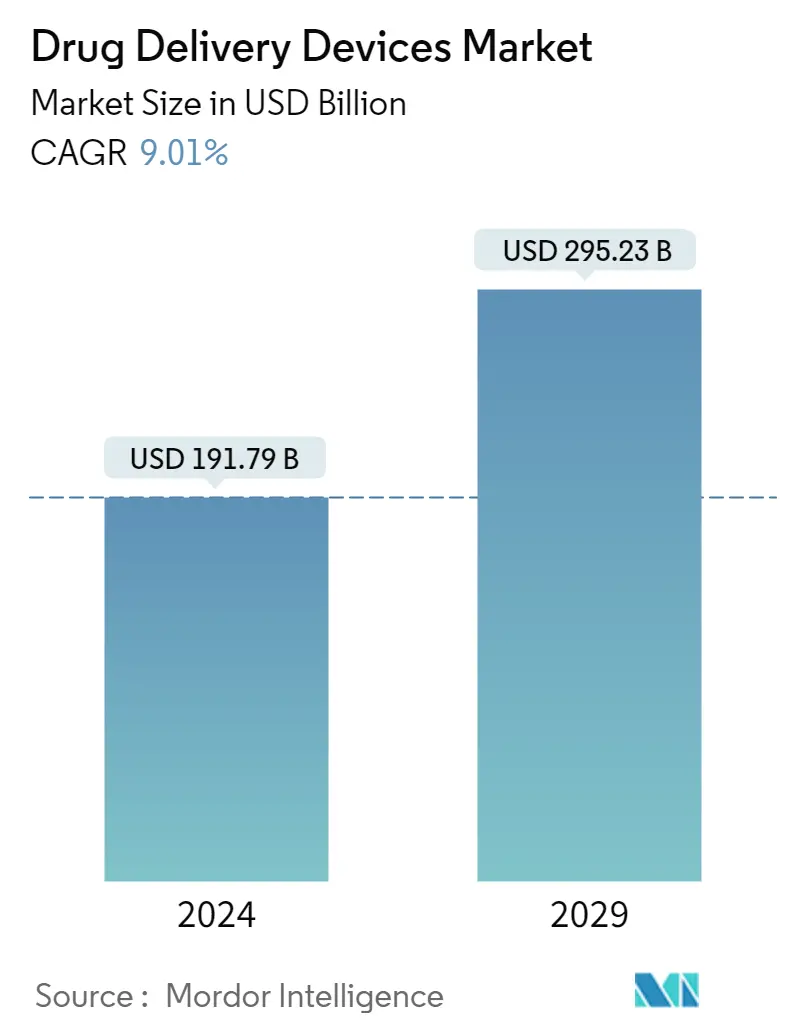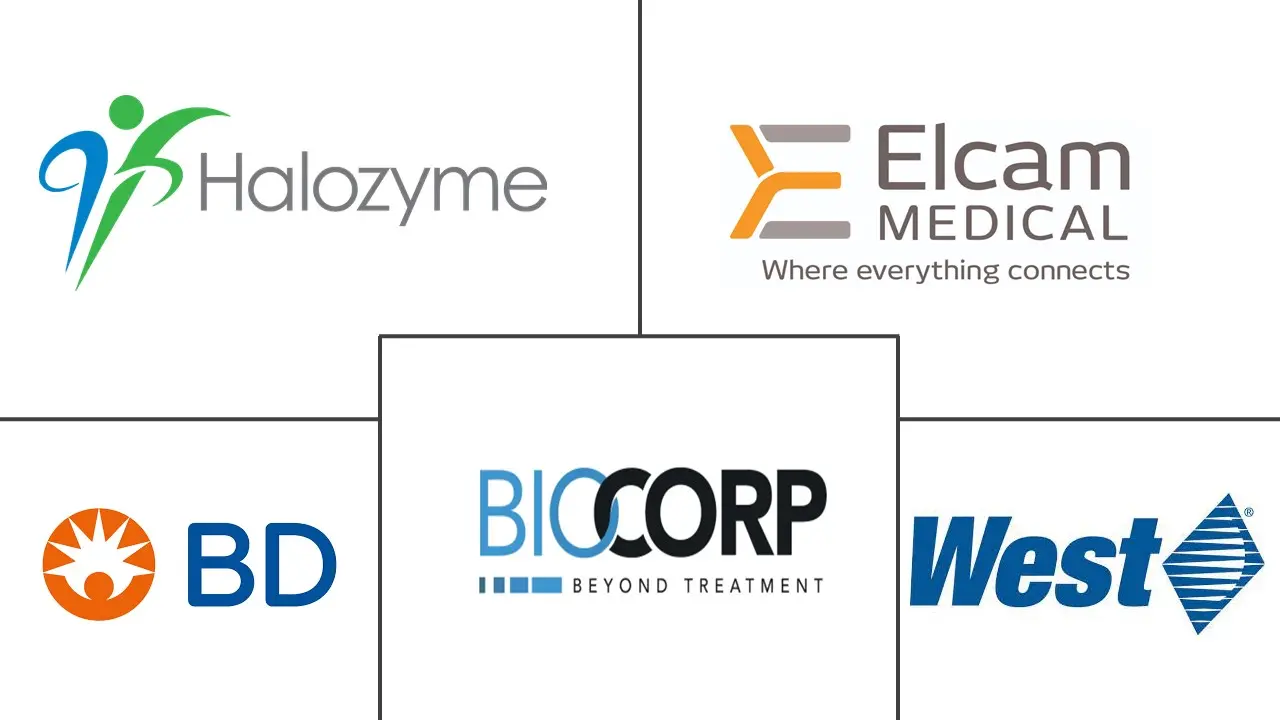Market Size of Drug Delivery Devices Industry

| Study Period | 2021 - 2029 |
| Market Size (2024) | USD 191.79 Billion |
| Market Size (2029) | USD 295.23 Billion |
| CAGR (2024 - 2029) | 9.01 % |
| Fastest Growing Market | Asia Pacific |
| Largest Market | North America |
Major Players
*Disclaimer: Major Players sorted in no particular order |
Need a report that reflects how COVID-19 has impacted this market and its growth?
Drug Delivery Devices Market Analysis
The Drug Delivery Devices Market size is estimated at USD 191.79 billion in 2024, and is expected to reach USD 295.23 billion by 2029, growing at a CAGR of 9.01% during the forecast period (2024-2029).
With the outbreak of COVID-19, most pharmaceutical companies and governments were and are working toward offering efficient medical treatment to COVID-19 patients, and drug delivery devices are expected to play a vital role in this context. For example, large-scale vaccination programs are being undertaken all over the world to immunize people against the SARS-CoV-2 virus. However, still, many companies are working on more efficient ways of delivering COVID-19 therapeutics to patients and investing heavily in them, which is expected to have a significant impact on the drug delivery market. For instance, in February 2022, Glenmark Pharmaceuticals Limited launched a nitric oxide nasal spray called FabiSpray in India for the treatment of adult patients with COVID-19 who had a high risk of progression of the disease. Currently, the usage of drug delivery devices for COVID-19 treatment has slowed down; hence, COVID-19 had a significant impact on the drug delivery market initially. However, the market is expected to experience steady growth over the forecast period.
The rising prevalence of chronic diseases, technological advancements, and the growth of the biologics market are significant factors expected to drive the development of the drug delivery devices market over the forecast period. As drug delivery devices help deliver the drugs, which are beneficial for the targeted population to recover faster, there has been a growing adoption of and inclination toward advanced drug delivery devices. Moreover, a rising number of cancer, respiratory disease, and diabetic patients worldwide may promote the adoption of drug delivery devices and drive the overall market. According to the data published by the International Agency for Research on Cancer 2020, globally, 1 in 5 people develop cancer during their lifetime, and 1 in 8 men and 1 in 11 women die. Breast, colorectal, lung, cervical, and thyroid cancers are common among women. In contrast, lung and prostate cancer are the most common among men, accounting for nearly one-third of all male cancers. This growing burden of cancer increases the adoption of drug delivery devices, which will contribute significantly to the market's growth over the studied forecast period.
Additionally, the article published by Frontiers in July 2020 mentioned that it is necessary to develop appropriate delivery systems and complete therapy strategies according to the nature of drugs and diabetes mellitus. As per the source, drug delivery devices have been potentially beneficial in many aspects of diabetes treatment, with effects such as improving the stability of drugs, overcoming different biological barriers in vivo to increase bioavailability, and acting as an intelligent, automated system to mimic endogenous insulin delivery and reduce the risk of hypoglycemia. These are the advantages of diabetes treatment devices. Therefore, the increasing demand for novel drug delivery devices is expected to boost the growth of the market studied.
The technological advancements in drug delivery devices are going to make them more patient-friendly, accessible, and accurate. In line with this, players invest more in research and development and continuously innovate new technologies and advanced drug delivery devices. In May 2021, Phillips-Medisize launched its Aria Smart Autoinjector platform, which unlocked innovation, differentiation, and sustainability in the digital drug-delivery device market. This device features advanced technologies such as a modular drug delivery platform that supports a variety of drug formulations and viscosities and has built-in Bluetooth, which enables connectivity to smartphones, tablets, and mobile apps. In addition, Roche has developed a Port Delivery System with ranibizumab (PDS), a drug delivery implant, to free patients with wet age-related macular degeneration from the need to undergo frequent eye injections in June 2021. The FDA granted this PDS drug delivery implant priority review. This active involvement of the major players is anticipated to have a considerable impact on the growth of the studied market.
Thus, all the aforementioned factors are expected to boost market growth over the forecast period. However, the risk of needlestick injury may restrain market growth over the forecast period.
